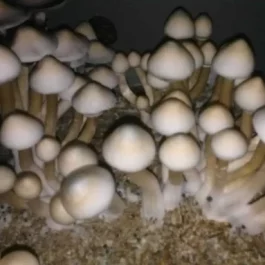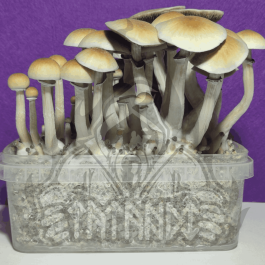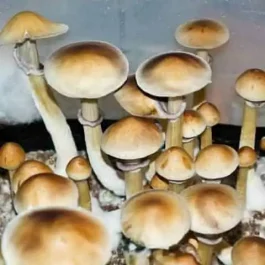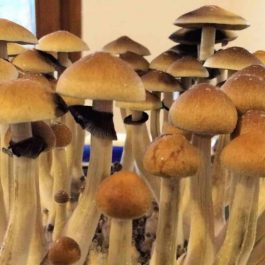Mushroom Spore Varieties in the USA: Where To Find Mushroom Spores Online
Mushroom spores play a vital biological role in the growth, spread, and survival of fungi across the United States. From the dense forests of the Pacific Northwest to the humid Southeast and the diverse ecosystems of the Northeast and Midwest, spores are responsible for the natural distribution of countless mushroom species native to American landscapes.
In recent years, interest in mushroom spores has grown rapidly throughout the U.S., not only among mycology hobbyists but also within academic programs, research labs, educators, and microscopy enthusiasts. Understanding what spores are—and how they function—can deepen your appreciation of American fungi and support scientific study in a safe and educational way.
What Are Mushroom Spores?
Mushroom spores are microscopic reproductive cells produced by fungi. Although they serve the same purpose as seeds in plants, spores differ because they lack stored nutrients and depend entirely on the surrounding environment to begin developing.
How Spores Are Produced
In mushrooms found across the United States, spores are released from structures such as:
-
Gills (common in many American woodland species)
-
Pores (frequent in U.S. polypores and boletes)
-
Teeth or spines (seen in species across Northern U.S. forests)
-
Outer surfaces (as in puffballs found in fields and grasslands nationwide)
A single mushroom growing in U.S. forests can release millions or even billions of spores to maximize the chance of reaching suitable habitats.
Microscopic Characteristics
Spores vary in:
-
Shape: round, oval, spiny, or ornamented
-
Size: typically 5–20 micrometers
-
Color: white, black, purple-brown, pink, or yellow
-
Surface pattern: smooth, ridged, warty, or spiky
These traits help American mycologists identify species with precision.
Conditions That Influence Spore Development in U.S. Environments
For spores to activate in nature, they must encounter suitable environmental conditions. Across the United States, these factors differ based on region and climate.
Moisture
Humid areas such as the Pacific Northwest, Appalachia, and the Gulf Coast offer ideal moisture levels for natural spore development.
Temperature
Temperatures vary significantly across the country:
-
Warm-season fungi flourish in southern states.
-
Cold-loving species thrive in northern states and mountain regions.
Oxygen
Spores require airflow, which is commonly found in American forests, meadows, and woodlands.
Biological Competition
Throughout the United States, spores often face competition from native bacteria, molds, and other fungi, which affects whether they can successfully develop into early fungal structures.
From Spore to Mycelium: Natural Fungal Development
In the wild, spores undergo several steps before becoming a mature fungal organism. This process takes place in forests, grasslands, decomposing wood, and soil across the U.S.
Germination
With enough moisture and oxygen, a spore forms a microscopic filament known as a hypha.
Hyphal Development
Hyphae branch outward and may fuse with compatible hyphae—a natural biological exchange necessary for further development.
Mycelium Formation
Fungi across America form mycelium in decaying logs, soil, or leaf litter. Mycelium is the main life stage of fungi and helps break down organic matter in U.S. ecosystems.
Common Biological Challenges for Spores in the USA
Spores in American environments often face obstacles such as:
-
Contamination from native microbes
-
Nonviable spores due to heat exposure during U.S. summers
-
Environmental instability caused by seasonal temperature swings, droughts, or harsh winters
Even so, fungi thrive throughout the country due to their ability to produce vast quantities of spores.
Frequently Asked Questions About Mushroom Spores
How long does it take for spores to activate?
Timing varies depending on climate and species, and U.S. regions drastically differ in humidity and temperature.
Can you see spores develop?
Individual spores are microscopic, but mycelium—once formed—becomes visible as fine white strands.
Do spores require light?
Spores and early mycelium do not rely on light; however, environmental cues may influence later stages of fungal development.
Why don’t spores activate sometimes?
Age, heat exposure, dryness, or microbial competition—all common in regions across the U.S.—can prevent spore activation.
The Growing Popularity of Mushroom Spores in the USA
The United States has seen a surge of interest in fungi due to:
-
increased public awareness of American ecosystems
-
educational mycology programs in U.S. universities
-
widespread hobbyist communities
-
growing research in environmental biology
-
improved access to affordable microscopy tools
Microscopy-grade spores are widely used across the country for:
-
taxonomic research
-
biology education
-
spore morphology studies
-
microscopy practice
-
species comparison
-
mycology hobby collections
Because these spores are non-viable and intended for research and microscopy, they are legally sold in many U.S. states (laws vary).
Where to Find Good-Quality Mushroom Spores in the USA
If you’re searching for high-quality microscopy-grade mushroom spores within the United States, several American vendors specialize in non-viable, research-grade spore samples ideal for microscopy, taxonomy, and fungal education.
American spores vendor typically provide:
-
U.S.-based shipping
-
sterile packaging
-
species labeled clearly for research
-
high-clarity microscopic samples
-
reasonable pricing and reliable customer service
👉 Visit: magicmushroomsonlinestore.com
-
- Mushroom Spores
Blue Meanie Magic Mushroom kit – Tatandi
- Price range: $185.00 through $550.00
- To preserve the quality of the mycelium and prevent it from being affected by the inclement weather, we renew the loafs stock frequently, which can cause the shipping time to oscillate slightly. Thanks for your understanding. Mycelium loaves and spores are exclusively for mycological, ethnobotanical or ornamental studies. They are not intended for agricultural or food use. Tatandi and Alchimia can…
- Select options This product has multiple variants. The options may be chosen on the product page
-
- Mushroom Spores
Burma Cubensis Mushroom Spores
- Price range: $200.00 through $650.00
- The Burma strain was discovered by a Thai student who collected a sample from buffalo dung nearby the city of Rangoon. Classification: Hallucinogenic Cultivation Difficulty: Easy Substrates: Equine dung and Enriched soils Temperature: Subtropical Strain Origin: Burma
- Select options This product has multiple variants. The options may be chosen on the product page
-
- Sale!
- Mushroom Spores
Buy Cremini Spore online
- Price range: $200.00 through $510.00
- The Cremini mushroom is a small version of the Portobello common to your local grocery store. When the Portobello fruits are small with unopened caps they are called Cremini.
- Select options This product has multiple variants. The options may be chosen on the product page
-
- Mushroom Spores
Creeper Mushroom Spore Syringe
- Price range: $200.00 through $600.00
- Select options This product has multiple variants. The options may be chosen on the product page







